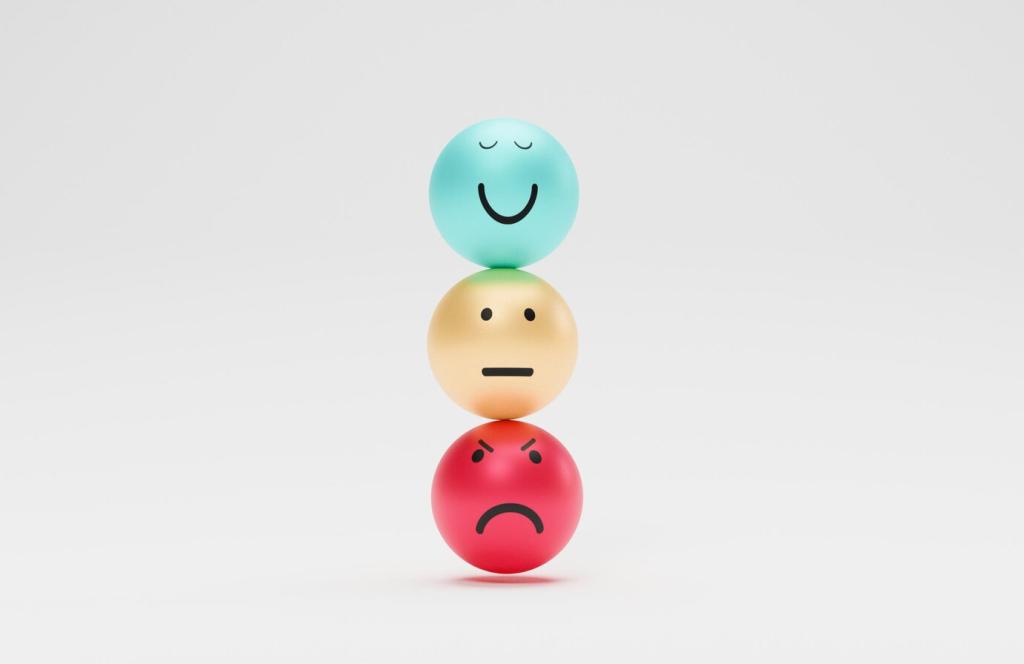Chosen theme: Mindful Journaling for Emotional Clarity. Step into a calm, honest space where pen meets presence. Explore simple practices, real stories, and science-backed techniques that help you name what you feel and nurture what you need. Subscribe for weekly prompts and share your reflections with our mindful journaling community.
Breathe, Notice, Name
Close your eyes for three slow breaths. Notice one sensation, one thought, and one feeling. Name each kindly, without fixing or judging. Then begin writing exactly what is present, allowing the first honest sentence to lead the rest.
Create a Small Sanctuary
Choose a spot that signals safety—a warm lamp, a favorite mug, soft background sounds. Tiny rituals anchor mindful journaling for emotional clarity, telling your nervous system, “It’s safe to feel, and safe to write.” Return here consistently.
RAIN on the Page
Recognize the emotion in one clear sentence. Allow it to exist without argument. Investigate gently with questions like “Where do I feel this?” and “What does it need?” Then Nurture with a supportive line to yourself, written like a dear friend.
Somatic Sentences
Begin each paragraph by describing body sensations in plain language—tight throat, warm chest, buzzing hands. Link sensation to emotion with curiosity. Somatic detail grounds mindful journaling for emotional clarity, preventing abstract spirals and inviting compassionate attention.
Label, Then Let Go
Write a simple label for each thought: worry, memory, plan, judgment. Place a small dot beside each label. Watching labels accumulate builds awareness, and awareness makes space. End with one release sentence, like “I can hold this lightly today.”
Affect Labeling Cools Reactivity
Studies suggest that naming feelings—“I feel anger,” “I feel shame”—can reduce amygdala activation and increase prefrontal regulation. In practice, that means your pen helps your brain step from alarm into perspective, especially when emotions feel huge and urgent.
Attention and Meaning-Making
Reflective writing organizes experience, shifting attention from rumination to meaning-making. Mindful journaling asks, “What is happening right now?” That question alone redirects mental energy toward clarity, helping you identify patterns, values, and the next compassionate step.
Stress, Sleep, and Mood
Brief, regular journaling has been linked to decreased stress, improved sleep quality, and steadier mood across days. Pairing mindfulness with writing amplifies benefits by reducing mental clutter before bed and promoting kinder inner dialogue during difficult moments.
Prompts to Try Tonight
Three Breaths, Three Lines
After three slow breaths, write three lines: “Right now I notice…”, “I feel…”, “I need…”. Keep it simple, honest, and specific. End with one gentle action that honors your need, even if it’s just drinking water or resting.
The Five Whys of a Feeling
Choose one emotion and ask “Why might I feel this?” five times. Each answer is not truth, just possibility. Curiosity loosens knots, revealing core needs beneath surface reactions and restoring clarity without blame or self-criticism.
Write the Kindest Reply
Copy a harsh inner thought. Beneath it, write a compassionate response you would offer a friend. This re-parents your inner voice and turns your journal into a steady ally when emotions flare and clarity wavers.
When the Page Feels Scary
Perfection-Free Zone
Promise yourself messy, misspelled, meandering lines. Clarity grows from honest ink, not polished prose. If you freeze, write “I feel stuck” repeatedly until new words appear. The point is presence, not performance or productivity.
Tiny Habits, Big Shifts
Attach journaling to an existing routine—after brushing teeth, before morning coffee, during transit. Two minutes count. Consistency builds trust with yourself, and trust invites deeper emotional clarity over time without forcing breakthroughs.
Privacy Matters
Protect your practice with a passworded app, a hidden notebook, or a box with a small lock. Clear boundaries calm the nervous system, making honest writing safer and more sustainable when exploring tender emotions.
Make It Playful and Personal
Write just one line each day capturing the truest feeling. Over weeks, the one-line mosaic reveals patterns and progress, turning mindful journaling for emotional clarity into a gentle timeline of your growing self-understanding.

Make It Playful and Personal
Draw a simple mind map with your main emotion in the center. Branch into triggers, sensations, needs, and actions. A visual approach often surfaces insights words alone might miss, deepening clarity through curiosity.
Join the Conversation, Grow the Practice
In the comments, tell us one sentence from today’s mindful journaling that surprised you. Your honest share may help someone else name their own feeling and find a kinder next step.

